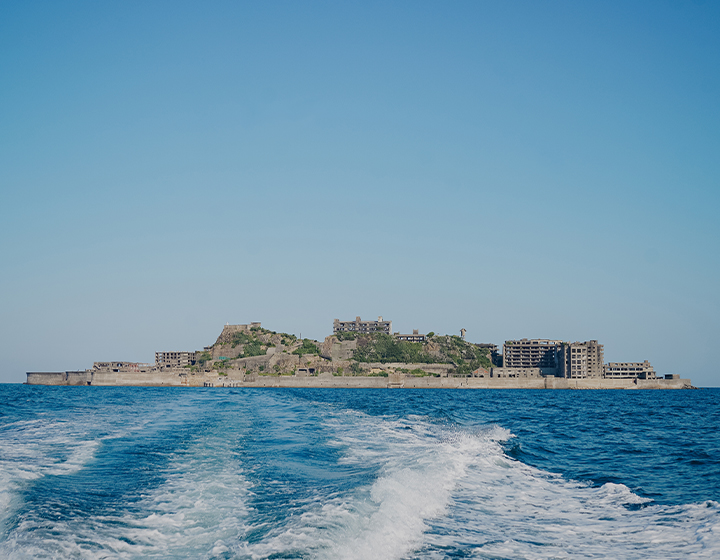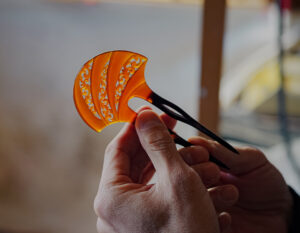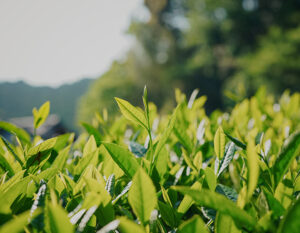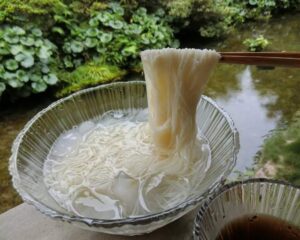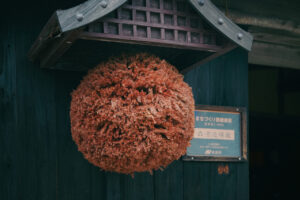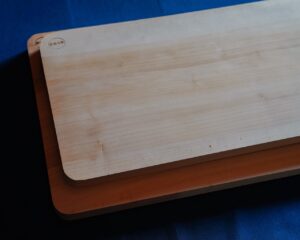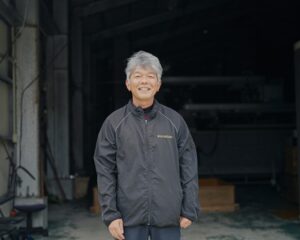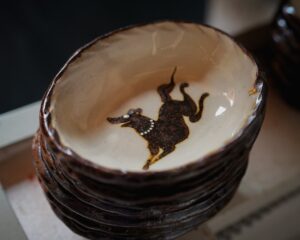Hashima Island, also known as “Gunkanjima” (Battleship Island), is located approximately 18 km southwest of Nagasaki Port. The high-quality coal mined here supported the modernization of Japan in the past, and was registered as a World Heritage site in 2015 as part of the ” Industrial Revolutionary Sites of Meiji Japan “. What was the lifestyle of the people who devoted themselves to the hard labor of coal mining in those days? Mr. Minoru Kinoshita, who was born and raised on the island, gave us a tour of the island.
Commonly known as “Gunkanjima” (Battleship Island). Hashima Island Coal Mine
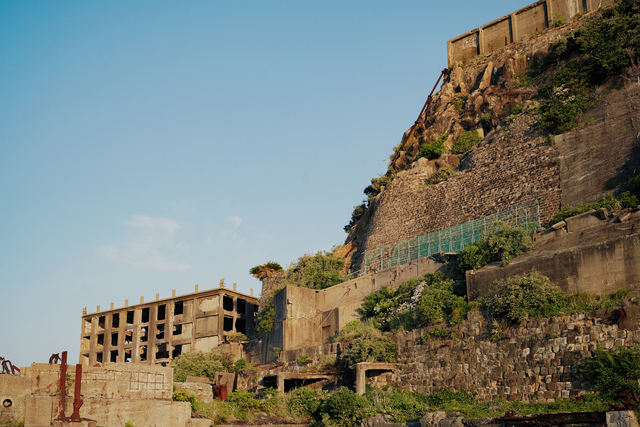
Hashima Island, also known as “Gunkanjima” because of its battleship-like appearance floating in the sea, is located about 18 km from Nagasaki Port. This small uninhabited island, about 1.3 times the size of Tokyo Dome, has a history of being developed as a full-scale modern coal mine by Mitsubishi Limited Partnership, a leading Japanese company in the Meiji era. It played an important role in pushing Japan’s rapid modernization from the end of the Edo period to the Showa and World War II periods, and was registered as a World Heritage site in 2015 as one of the components of the “Industrial Revolutionary Sites of Meiji Japan: Iron and Steel Making, Shipbuilding, and Coal Industry” cultural heritage.
History of Hashima Island Coal Mine
Today, Hashima Island is a small island measuring 480 m from north to south and 160 m from east to west, with an area of about 6.5 ha, which was created by land reclamation six times in total by 1931. It was originally a reef measuring 320 m north to south and 120 m east to west, half the size of the present island. In other words, Hashima Island is an artificial island that was formed by reclaiming the island’s periphery. The reason why the expansion was necessary was due to the situation Japan was in at the time and the energy situation. Japan, which had had no foreign contacts until the Edo period, needed to modernize rapidly to keep up with other countries, and securing coal, the main energy source at the time, was a challenge. At that time, a high-quality undersea coal vein was discovered on Hashima Island. As a result of the accelerated development of coal mines in accordance with the trends of the times, an artificial island was born on a reef battered by rough seas, featuring the most advanced technology of the time.
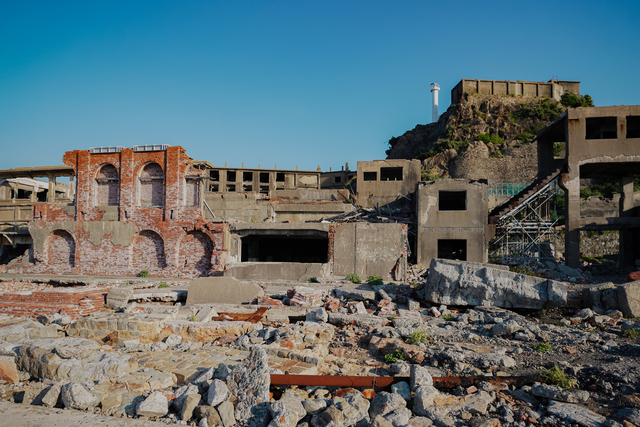
The Beginning of Hashima Island Coal Mine
Until the end of the Edo period, fishermen living nearby engaged in “rock digging,” mining the exposed coal on the surface of the reefs while fishing. The Saga Nabeshima clan continued small-scale coal mining until the early 19th century, when a coal vein was discovered on the seabed of Hashima Island, and the management of the island was transferred to Mitsubishi Limited Partnership, which together with Takashima, located to the north of Hashima Island, rapidly developed the island into a modern coal mining center.
At its peak, the population density was the highest in Japan. Japan’s first high-rise apartment building is built.
The history of the Hashima Island coal mine began in earnest in 1890 under the operation of Mitsubishi Limited Partnership. Hashima Island has a coal vein on the seabed, and the work site is about 1,000 meters underground. Since machinery cannot enter the huge and complicated tunnels, the work is carried out manually with the utmost care and attention. In this harsh and dangerous environment, the miners were divided into groups for efficient mining. The coal extracted was bituminous coal, which contained very little bitumen (inferior coal). The coal from Hashima Island, which was said to be of the highest quality in Japan, was supplied to the Yawata Steel Works mainly as coking coal for steelmaking, thereby supporting Japan’s modern industry.
As development progressed, the number of miners increased and company housing was built one after another, but the wooden houses that were common at the time frequently collapsed due to the rough seas that came in every time there was bad weather. In 1916, using the world’s latest technology, Japan’s first reinforced concrete high-rise apartment building was constructed, and by 1960, more than 5,000 people, or nine times the population density of the Tokyo metropolitan area at the time, were living in the building. The standard of living for miners with good incomes was high, and lifelines such as water and electricity were stable. The penetration rate of electrical appliances was also high. For example, in 1958, the nationwide TV penetration rate was 10%, whereas on Hashima Island it was almost 100%. The island’s lifestyle was rich and vibrant, with Japan’s first “rooftop garden” on the roof of a company housing complex providing space for people to enjoy greenery, and an open-air market regularly held on the island’s main street, “Hashima Ginza.
Closure of the Mine
Mining volume peaked in 1966. Three months later, on April 20, all the islanders left the island, leaving it uninhabited. In 2015, the island was registered as a World Heritage site, and its popularity as a tourist destination increased. Hashima Island, which attracts people with its unique scenery, has also appeared as a filming location in movies such as “Skyfall” and “The Giant of Progress.
Landing on Hashima Island. Mr. Minoru Kinoshita, who spent his childhood on the island, is our guide.
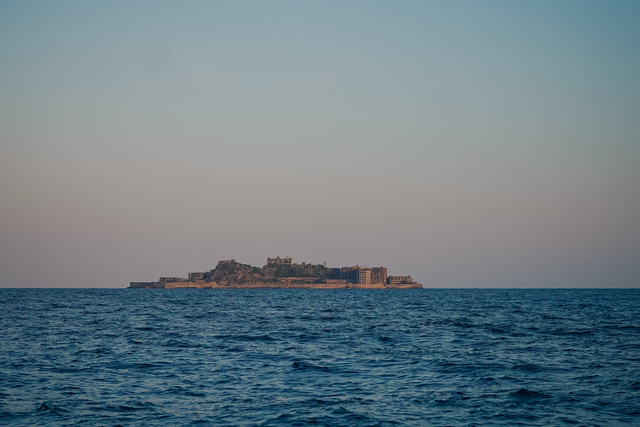
Looking out to sea from Nonokushi Port in the early morning in southern Nagasaki, the silhouette of a large battleship floated on the sea, illuminated by the morning sun. The resemblance to the Japanese Navy battleship “Tosa,” built at the Mitsubishi Heavy Industries shipyard in Nagasaki during the Taisho era (1912-1926), is the origin of the common name for Hashima Island, “Gunkanjima” (Battleship Island). Its presence explains why, during World War II, the American military mistook it for a Japanese battleship and bombarded it with artillery.
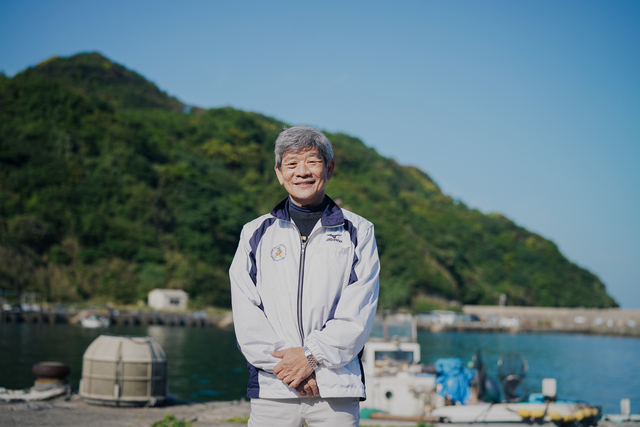
Minoru Kinoshita, a guide from Gunkanjima Concierge, will take us on a fishing boat from the harbor and show us around the island. Kinoshita-san, who spent his first year of junior high school on Hashima Island, is now a ” former islander guide ” who tells the history of Hashima Island and the lifestyle of the time.
Life on a Coal Mine Island
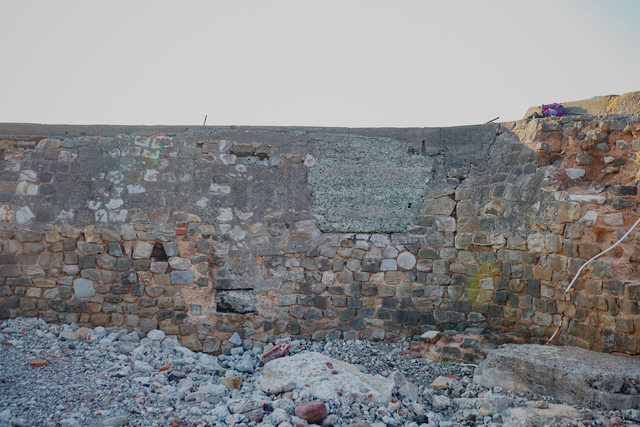
As you approach the island, you can see red masonry on some of the outer walls. This is the Amakawa method of revetment. The island was registered as a World Heritage site in recognition of its historical background of coal mine facilities built in the Meiji era, before the spread of cement in Japan, using “Amakawa,” a mixture of lime and red clay. Landing is from the “Dolphin Pier. This pier is the third generation, rebuilt in 1962, and is 25 m long, 12 m wide, and 15 m high from the seabed to create an artificial island to maintain its durability. Walking along the 230-meter tour path on the south side of the island, visitors can see the ruins of the second shaft, which was the main mine, reinforced concrete apartments, and a row of half-destroyed buildings covered with greenery. The island was filled with a unique beauty and serene tranquility, as if one had wandered into another world.
More than half of the island is a mining area. We lived on the rest of the land. In addition to houses, schools, and hospitals, there were shrines, police stations, barbershops, and even pachinko halls, billiard halls, mahjong parlors, go halls, and brothels for adult entertainment,” said Kinoshita. The Hashima Shrine with its soil and rooftop were a favorite playground for children. They spent their time playing baseball and marbles. We often played hide-and-seek in the apartment.
Father, a “Coal Miner
Kinoshita’s father was a projectionist at the Showakan, the only movie theater on Hashima Island. The cinema closed in the 1960s due to the spread of television on the island, and he was forced to work as a miner, commonly known as a “coal miner. Almost all of the fathers of the island’s children were coal miners. Even as children, we all had a firm understanding of the hard work in the mines, and we made sure not to disturb our fathers’ rest,” he said.
When we asked Kinoshita-san, who said that all the islanders were like family, about security on the island, he replied, “There was a jail at the police station, but I heard that it was never used for crime. The miners were all such heavy drinkers that they were said to ‘start a fight if there was no alcohol,’ so people who were too intoxicated to return home used the jail to spend the night,” he says with a smile. The miners routinely held group discussions over drinks. Because of their pride in the work they put their lives on the line for, arguments rarely turned heated and led to fights, but there were no fights outside of work, and the island was peaceful.
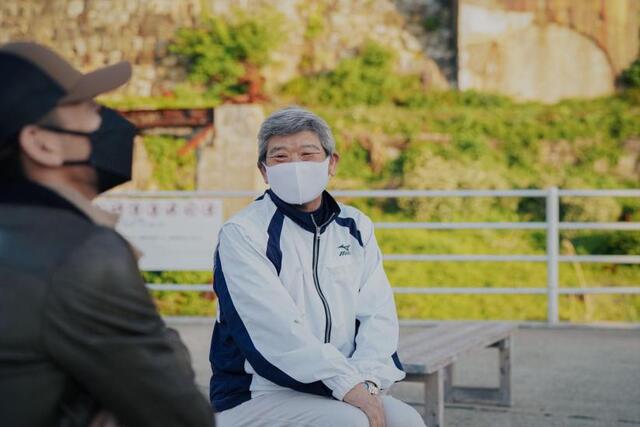
The miners worked three shifts: 8:00 to 16:00, 16:00 to 24:00, and 24:00 to 8:00. On days when my father worked the night shift, he would wake me up at 10:30 p.m. and say, ‘Have a good day. I hated it at the time, but now I understand how my father felt. I guess he wanted to hear his children’s voices before he started the dangerous work. Kinoshita’s story conveys the warmth of his family’s daily life on the island of coal mines, the activities and liveliness of the people.
Infrastructure on the Island
Securing water is essential to life on the island. In 1957, Japan’s first two submarine water lines were constructed to provide a stable water supply, bringing in approximately 1,000 tons of water per day from Nagasaki City. The water was once stored in tanks and then distributed to water bottles in each apartment. Each household is given a “water ticket” in advance, and in exchange for the ticket, each household receives a daily supply of water each morning. Each household was able to secure the amount of water they needed on a daily basis.
Few houses had baths, and most of the islanders used public bathhouses. After work, miners bathed in a three-step process: first, they went into the bathtub in their work clothes to remove coal dust, then they took off their clothes and got into the water, and finally they thoroughly washed their bodies. They used fresh water only for the third stage of bathing, and seawater for the rest. The school pool used seawater. All lifelines on the island, including water, electricity, and gas, were managed by Mitsubishi Limited Partnership, and no matter how much they were used, no fees were charged. The company housing for the miners cost 10 yen a month in rent. It was a very comfortable living environment. It wasn’t until I left the island after the mine closed that I realized how blessed I was. I often wanted to go back to the island! I wanted to go back to the island all the time,” says Kinoshita. However, typhoons and other bad weather can be inconvenient. For about a week after a typhoon,” Kinoshita said, “the boats couldn’t land on the island and supplies couldn’t reach us. We didn’t have a refrigerator at the time, so we had to make do with canned goods and bread.
The islanders took pride in their work that supported modern Japan, and they lived on the island while confronting natural disasters. Everyone supported each other and lived together. Perhaps it was because of the hardships they endured that they pulled together and strengthened their bonds,” says Kinoshita. I am very happy that my birthplace has become a World Heritage site. People from all over the world are now interested in the island and visit us. The remains are slowly falling apart, but I would like to tell everyone what the island looks like today, along with its history.
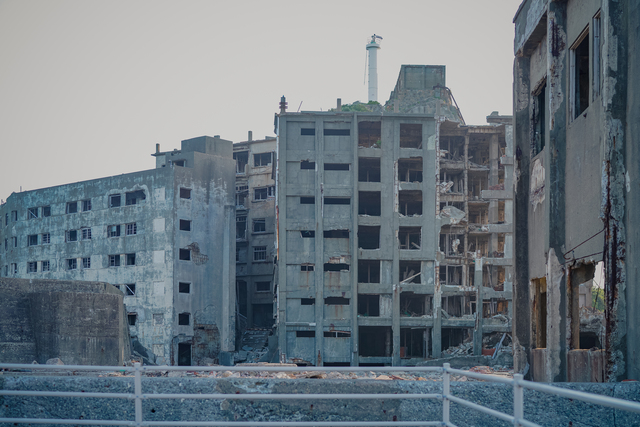
As of the end of 2021, experts predict that the oldest reinforced concrete apartment building in Japan, Building 30, will collapse in about six months. Although the structure is barely intact at present, it would not be surprising if it were to collapse at any time. Hashima Island is changing its appearance every moment as time goes by, and there are landscapes that can only be seen now.
What the “City of the Future” once conveyed
Hashima Island, where Japan’s first cutting-edge technology was concentrated, was truly a “city of the future” of its time. It was not only the coal business, but also people’s lives. The isolated island in the sea that supported Japan’s modernization and high-growth period quietly conveys to us today the trajectory of the people who boldly took on the challenges of the future of Japan in the face of nature, while changing its appearance with the passage of time.



